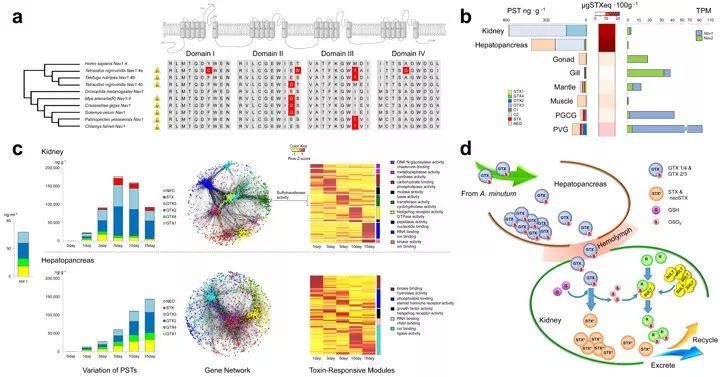
We published our new findings on adaptive evolution of scallops in Nature Communications
On November 23, 2017, Nature Communications published online our latest paper "Scallop genome reveals molecular adaptations to semi-sessile life and neurotoxins" by Prof. Zhenmin Bao's team from the Key Laboratory of Marine Genetics and Breeding, Ministry of Education, Ocean University of China. Our group, in collaboration with researchers from Novogene (Beijing) and Rutgers University (USA), has completed the fine mapping of the genome of the second main species of Chlamys farreri in China after Patinopecten yessoensis, and has made important progress in the omics analysis of the environmental adaptations of bivalves.
Bivalves are distributed in nearly ten thousand species around the world. As an ancient animal group that emerged 500 million years ago, bivalves have survived many biological extinctions and are still thriving today, and their extraordinary ability to adapt to the environment makes them a good model for studying the evolution of animal adaptations. Scallops are well known for their colorful shells, semi-attached lifestyle, large closed-shell muscles to support their swimming ability, numerous well-developed mirror eyes to find suitable habitats and escape from enemies, secretion of byssal for temporary attachment, and accumulation and tolerance to high concentrations of algal-derived neurotoxins. The molecular basis of these adaptive traits can help understand how bivalves evolve to adapt to different habitats. The group led by Professor Zhenmin Bao completed the first high-quality genome map of Chlamys farreri. It was found that arginine kinase, the key enzyme to control energy supply, was expressed as high as 34,704 tpm in the adductor muscle of scallop, which was very important for its explosive swimming ability. Scallops express the genes related to energy-consuming steps with high expression, so as to achieve higher productivity efficiency. Different from vertebrates, scallop muscle is in a state of "molecular heterozygosity", that is, the marker genes of vertebrate striated muscle and smooth muscle are co-expressed in the corresponding types of scallop muscle, and this "molecular heterozygosity" phenomenon is probably an ancient existing form of animal muscle. Studies of scallop eyes have revealed that the highly expressed optin r-opsin gene is an intronless gene generated by a retrotransposition mechanism, providing an evolutionary advantage for rapid transcriptional production of large amounts of optins, and that the optin gene family expands its sensitivity to different wavelength spectra by expanding and adding new mutations at key functional sites. The scallop has a functionally specialized foot, and a comprehensive analysis of the spatio-temporal regulation of secretion of byssal reveals the important regulatory role of the expanded tyrosinase gene family in scallop secretion of byssal and adhesion. The key components of scallop byssal adhesion are very different from those of known mussels, which provides a basis for the development of novel "wet adhesion" materials. In addition, it was found that scallop tolerance to high concentrations of algal-derived toxins is achieved mainly by altering the expression of key Na ion channel sites, enabling the mussels to increase their toxin resistance by tens or even tens of thousands of times. The study also unexpectedly found that the kidney of scallops is the most important organ for accumulating and transforming toxins, which is also a breakthrough finding, as the kidney has been a neglected organ in shellfish toxin research before. It was found that scallop hepatopancreas and kidney are the two main "toxin centers", the former is mainly responsible for toxin absorption and transport, while the latter is mainly responsible for toxin transformation and metabolism, in which sulfotransferase plays an important role in toxin transformation. The above study expands and deepens the current understanding of the basis of the histological regulation of scallop semi-attached lifestyle and neurotoxin tolerance, and provides new insights into the evolutionary origin of adaptive traits in bivalves.
Prof. Zhenmin Bao and Prof. Shi Wang of the Key Laboratory of Marine Biogenetics and Breeding of the Ministry of Education were the corresponding authors of the paper. The research work was funded by the National Natural Science Foundation of China, the National High Technology Research and Development Program of China (863 program) and the AoShan Talents Program of Qingdao National Laboratory for Marine Science and Technology.

Figure 1: Mechanism of toxin tolerance and toxin accumulation and transformation in the hepatopancreas and kidney of scallops
Paper links: Scallop genome reveals molecular adaptations to semi - sessile life and neurotoxins | Nature Communications

